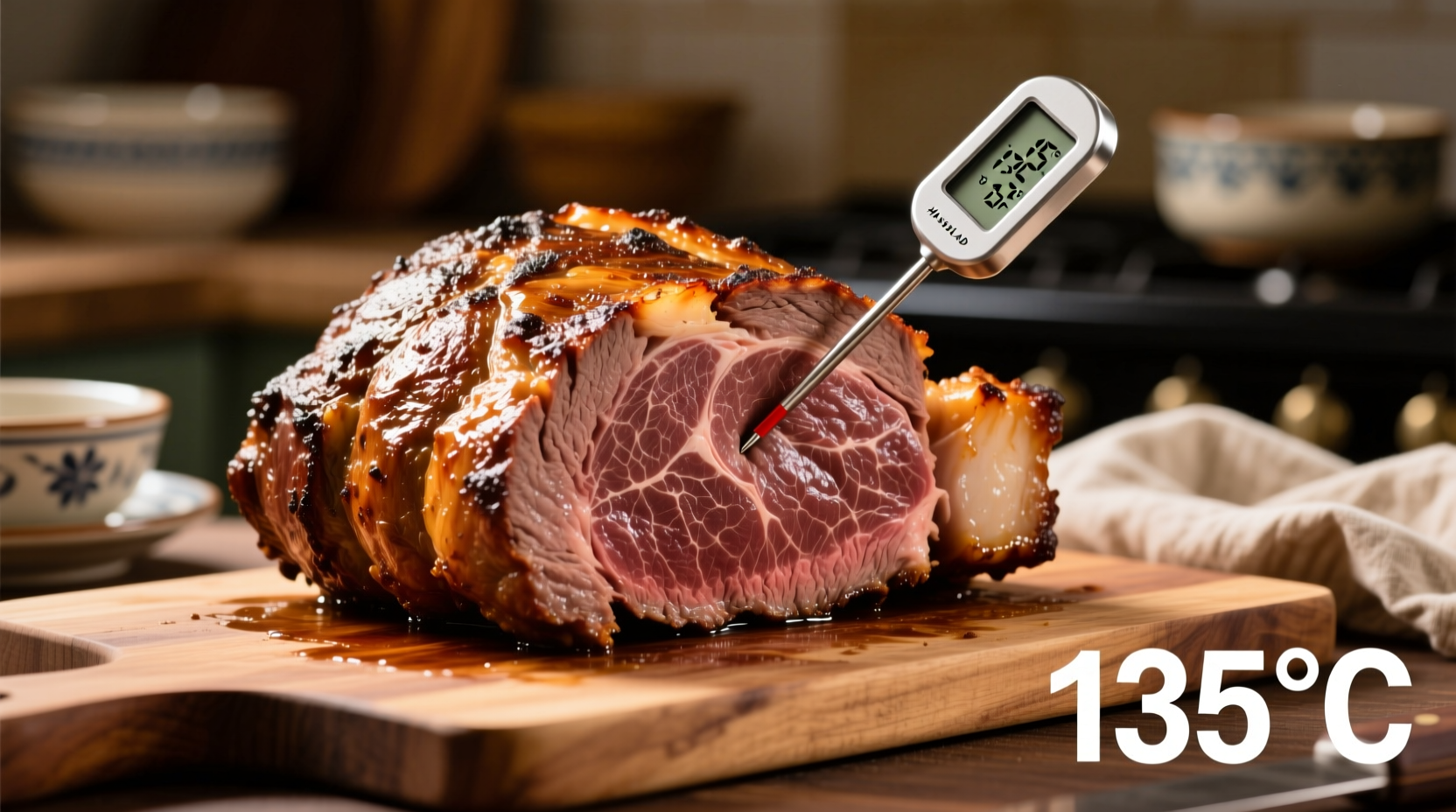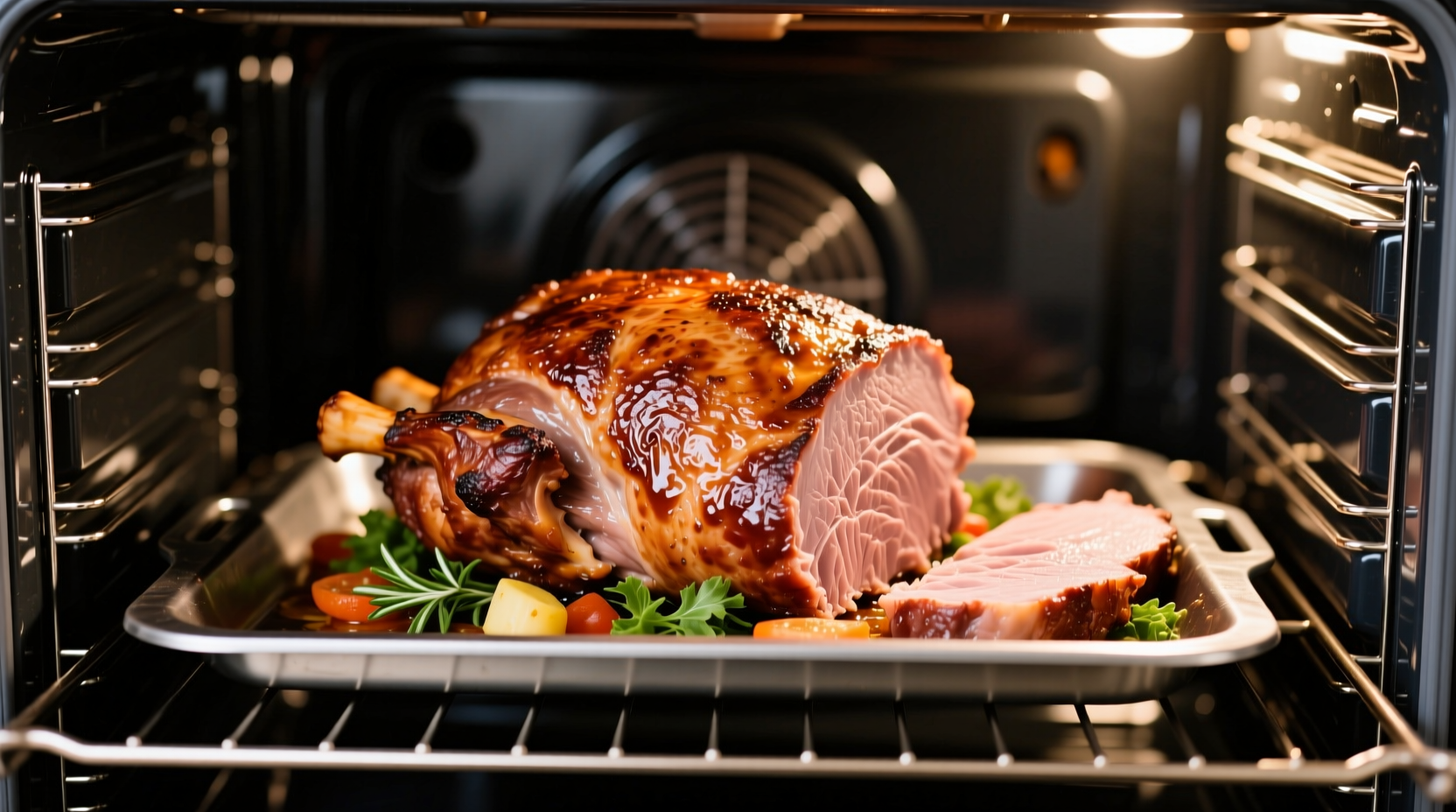Nothing beats a perfectly cooked roast, but getting the timing right can make or break your meal. Whether you're preparing Sunday dinner or hosting a special occasion, understanding the precise cooking duration ensures tender, juicy results every time. This guide cuts through the confusion with science-backed timing guidelines that account for all critical variables.
Why Roast Cooking Times Vary: Key Factors Explained
Before checking your oven, recognize these four elements that dramatically impact cooking duration:
- Meat composition: Fatty cuts like pork shoulder need longer cooking than leaner beef tenderloin
- Starting temperature: Room-temperature meat cooks 20% faster than refrigerated
- Oven calibration: Home ovens often vary by ±25°F from set temperature
- Rack position: Middle rack provides most even heat distribution
| Roast Type | Weight | Oven Temp | Approx. Time | Target Internal Temp |
|---|---|---|---|---|
| Beef Ribeye | 3-4 lbs | 325°F | 1½-2 hours | 135°F (medium-rare) |
| Pork Loin | 4-5 lbs | 350°F | 1¾-2¼ hours | 145°F + 3 min rest |
| Lamb Leg | 5-7 lbs | 325°F | 2-2½ hours | 140°F (medium) |
| Chicken | 4-5 lbs | 375°F | 1¼-1¾ hours | 165°F (breast) |
Pre-Cooking Essentials: Setting Up for Success
Skip these steps and you'll compromise timing accuracy:
- Thermometer calibration: Test your meat thermometer in ice water (should read 32°F/0°C)
- Pat dry surface: Moisture creates steam, extending cooking time by 15-20 minutes
- Bring to room temperature: Remove from fridge 60-90 minutes pre-cooking
- Preheat properly: Allow 20+ minutes for oven to stabilize at target temperature
Monitoring Progress: Beyond the Clock
Time estimates provide starting points, but these indicators determine actual doneness:
- Instant-read thermometer: Insert into thickest part, avoiding bone (USDA Food Safety guidelines require minimum 145°F for whole cuts with 3-minute rest)
- Touch test: Medium-rare feels like the base of your thumb when touching index finger
- Juice color: Clear juices indicate proper doneness; pink suggests undercooking
Remember that meat continues cooking during rest time. Remove roasts 5°F below target temperature to account for this carryover cooking. The USDA Food Safety and Inspection Service confirms this technique prevents overcooking while ensuring food safety (fsis.usda.gov).
Avoid These Common Timing Mistakes
Even experienced cooks fall into these traps:
- Opening oven frequently: Each peek drops temperature by 25-50°F, adding 5-10 minutes per opening
- Guessing doneness: Visual cues alone fail 40% of the time according to America's Test Kitchen testing
- Skipping rest time: Cutting too soon releases juices, resulting in dry meat despite perfect timing
- Ignoring altitude: Above 3,000 feet, increase cooking time 5-10% due to lower boiling point

Special Considerations for Different Roasts
Understanding meat science improves timing accuracy:
Beef tenderloin requires precise timing because its leanness offers zero margin for error. The American Meat Science Association notes that exceeding 140°F causes rapid moisture loss in tender cuts (meatscience.org). Conversely, collagen-rich roasts like pork shoulder need lower temperatures (275°F) for extended periods (6-8 hours) to break down connective tissue.
For holiday roasts, consider reverse searing: cook at low temperature (225°F) until 110°F internal, then blast at 500°F for crust. This method, validated by Modernist Cuisine research, provides unprecedented control over doneness while reducing cooking time variance.
When Guidelines Don't Apply: Context Boundaries
Standard timing charts require adjustment in these scenarios:
- Convection ovens: Reduce time by 25% or lower temperature by 25°F
- Frozen roasts: Increase time by 50% and check temperature 30 minutes early
- Stuffed roasts: Add 20-30 minutes and verify stuffing reaches 165°F
- Thermometer placement: Incorrect positioning causes 10-15°F reading errors
FoodSafety.gov emphasizes that visual cues alone cannot guarantee safety: "Color is not a reliable indicator of doneness. Only a food thermometer can verify that meat has reached a safe minimum internal temperature" (foodsafety.gov).
Perfecting Your Roast: Pro Tips
Implement these techniques for consistent results:
- Use an oven thermometer for accurate ambient temperature readings
- Place roast on rack to allow air circulation around all sides
- Rotate pan halfway through cooking for even browning
- Rest meat covered loosely with foil for 15 minutes minimum
Remember that cooking time serves as a guideline, not a rule. Your roast's actual readiness depends on internal temperature, not the clock. Master this distinction and you'll never serve undercooked or dried-out meat again.











 浙公网安备
33010002000092号
浙公网安备
33010002000092号 浙B2-20120091-4
浙B2-20120091-4